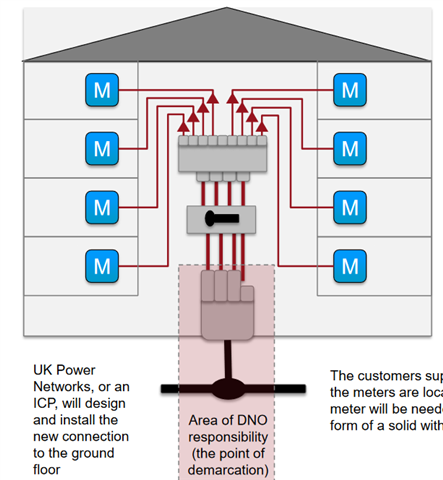In an existing multi-residential building, the existing BNO serves the local (Ryefield / Bemco) multi-way distribution boards.
There is no additional circuit protection or isolation between the incoming utility supply fuses and the distribution boards.
We are now replacing the interconnecting wiring as it is aged and has VIR insulation.
We were not proposing to provide additional isolation and circuit protection between the utility supply fuses and the distribution boards as it is an existing condition.
UKPN's (the local network operator) guidance, for new installations, allows the non-provision of the isolator and the distribution board can act as the isolation.'
The contractor has stated:
with remote panels and cabling running through the fabric of the building will need isolation and overload protection. We can not sign it off to BS7671 otherwise
However we consider that the existing installation arrangement does not need to be modified and a BS7671 certificate can be provided.
Please can you advise if a new isolator and circuit protection must be provided?
If it is not provided can the contractor provide a test certificate for the installation?
